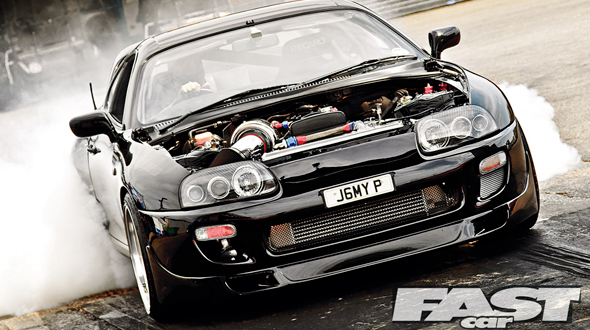When it comes to car tuning, there’s little to beat modern Toyota engines. From normally aspirated, to turbocharged, from small capacity to big V8s, there’s something here for everyone. Here’s how to get the most out of them.
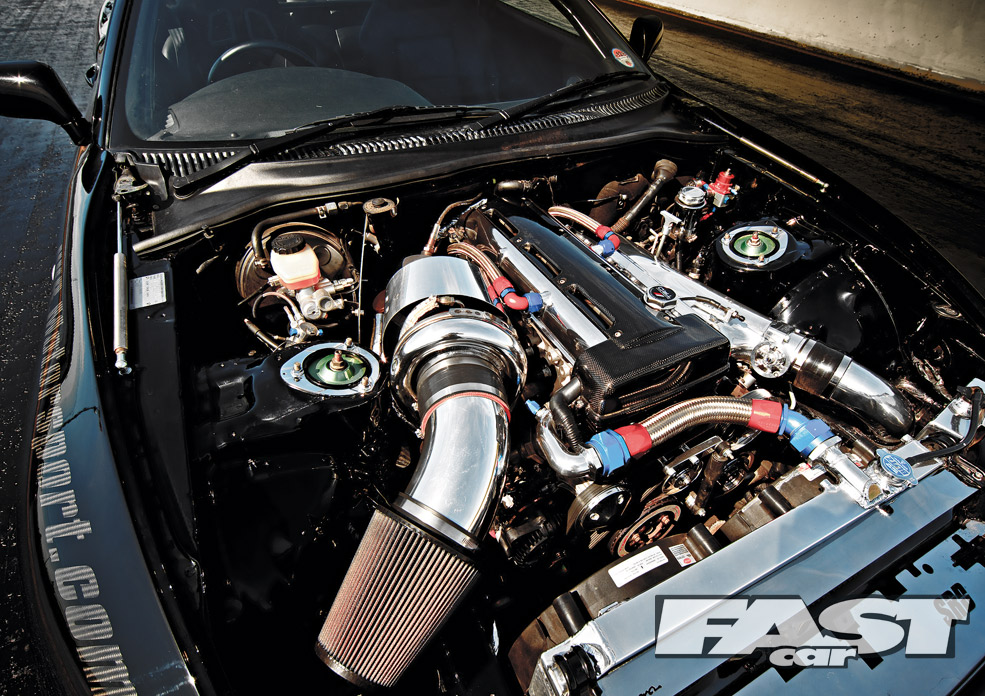
Toyota 2JZ-GTE Engine
Commonly found in: Mk4 Supra and Aristo.
Spec: 3ltr 24V straight-six, twin sequential turbos
Standard Power: 280-320bhp
Potential Power: 1500bhp+
One of the most famous engines in modern engine tuning, it’s well known for a very good reason; it’s astoundingly strong and has incredible potential.
With the best part of 2000bhp possible from this turbocharged straight-six, and the current standing mile record for a 2JZ Supra being 246mph, over 40mph faster than a Veyron can do in the same distance, it’s one of the best engines ever made.
It first appeared in the early ’90s, allegedly as a response to Nissan’s RB26 engine, which was dominating touring car racing worldwide. But due to rule changes, the 2JZ was never used in circuit racing, leaving Supra and Aristo road cars to be powered by this immensely tunable engine.
The first thing to mention about this unit is that 1000bhp is actually possible on a standard engine. It’s also quite commonplace for 2JZs with over 700bhp to have a standard bottom end and remain reliable.
Starting at the beginning, with a little more boost and a better exhaust system the standard twin turbos can take the car to around 400bhp.
To be honest, the sequential turbo setup is complex and little more than a gimmick once the car is tuned, so one of the first steps beyond 400bhp is a single turbo conversion along with uprated fuelling and engine management to suit.
When going for a single turbo conversion, most people head for 600bhp or more as reliability and drivability aren’t really issues. There are stroker kits available which can increase the capacity to 3.4ltr, but the majority of big power cars stick with 3ltr.
Not only can the standard crank happily withstand 1300bhp or more, but keeping it at stock stroke enables the big 2J to happily rev to 8500rpm. Now, hands up who wants a 2JZ engined car?
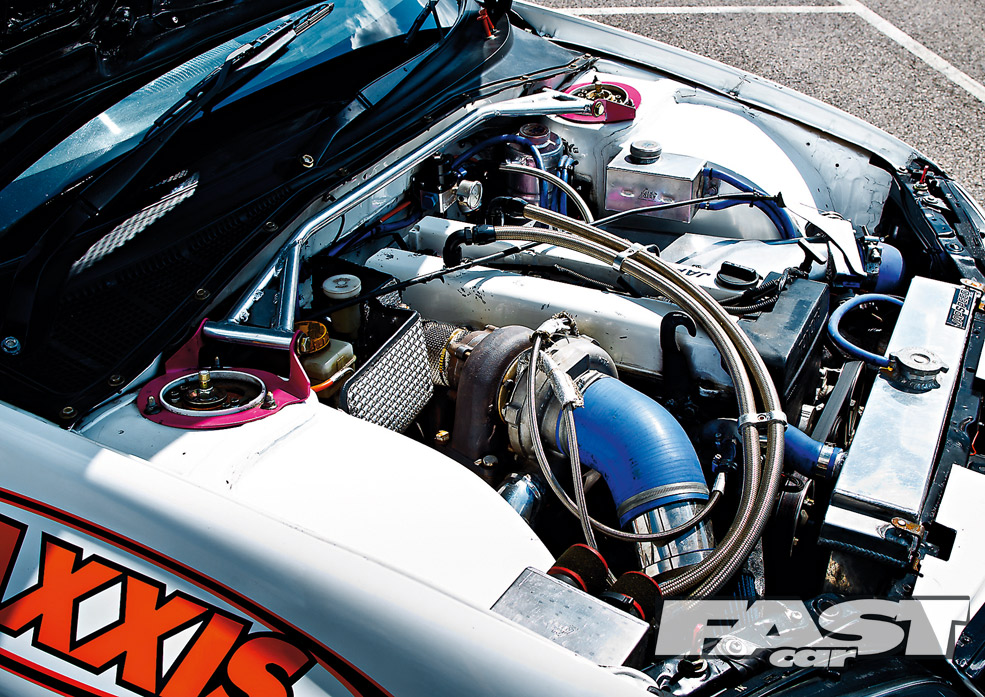
Toyota 1JZ-GTE Engine
Commonly found in: 1996-on Chaser/Cresta/Mk2 Soarer, Mk3 Supra (Import versions only).
Spec: 2.5ltr 24V straight-six, twin non-sequential turbos (Late models have single turbo)
Standard Power: 280bhp
Potential Power: 1000bhp+
Normally fitted with automatic gearboxes on Toyota Soarers, or in manual form in the JZX series of big four-door Toyotas such as the Chaser, the 1JZ is quite similar to the 2JZ, albeit a little ‘revvier’ feeling at the expense of a little torque (which is to be expected with half a litre less capacity).
They came with twin turbos as standard, but running in parallel form rather than sequential, and are good for around 350bhp, as is the larger single turbo fitted to later models of this engine.
Just like the 2JZ, for big power the stock turbo setup is ditched for a larger single turbo, and along with the usual bolt on upgrades like a larger intercooler, fuel system, aftermarket ECU and so on, a very strong and reliable 550bhp can be had.
With uprated internals the sky is the limit, but rare as people often head for the 2JZ if they are spending big money on uprated internals. Just like the 2JZ, replacing the stock manifold with a freer flowing aftermarket item always seems to give impressive gains, even at around the 500bhp level.
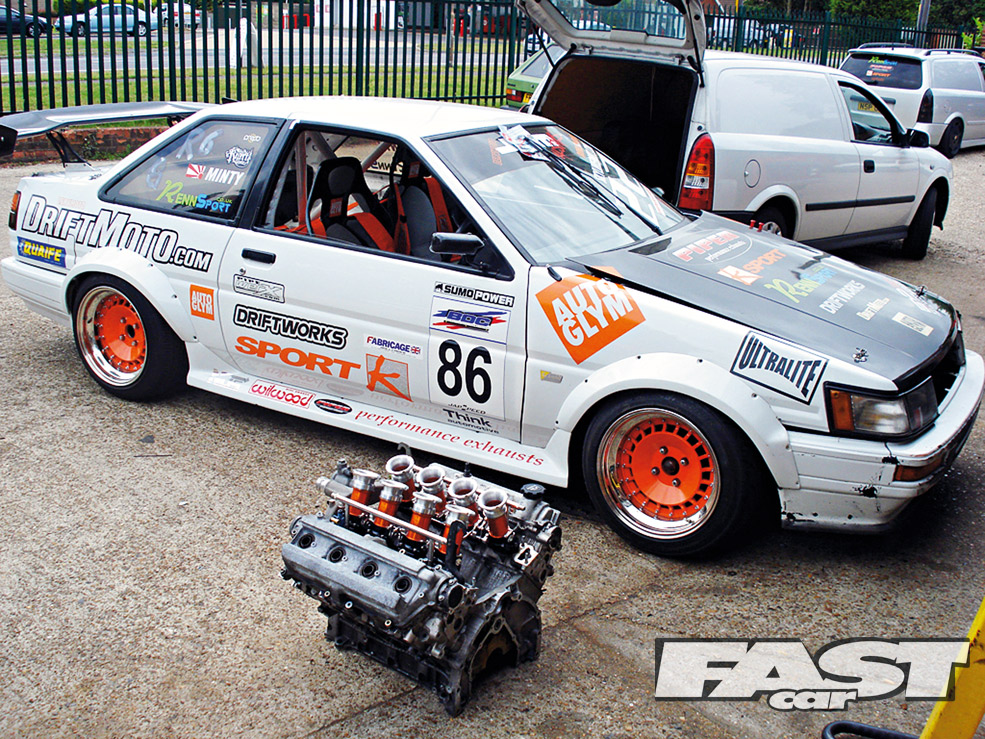
Toyota 1UZ-FE Engine
Commonly found in: Lexus LS400 and Soarer.
Spec: 4ltr 32V V8 N/A (Late models with VVTi)
Standard Power: 256-300bhp
Potential Power: 1500bhp+
Although used by Toyota in luxury production cars, the 1UZ V8 has all the underpinnings of a full race engine, including six-bolt main caps, a light alloy block, quad cams, and steel crank and rods, and was used in Toyota’s 1995-1997 Le Mans cars.
While standard performance is nothing amazing, the 4ltr N/A V8 is a great base for something very special indeed. Unusually for a V8, it is very high revving, with the standard engine happily going to 7500rpm, and we’ve seen versions in tuned road cars revving to around 10,000rpm, which is right up there with the best supercar V8s.
When it comes to N/A tuning, we’ve seen around 500bhp from these engines using heavily modified heads, wild cams, fully uprated internals, eight throttle bodies, and 9000+rpm limit. One thing’s for sure though, the sound and throttle response is incredible and they work fantastically well in lightweight cars.
We’ve seen a number of supercharged versions too, and while this is often the stereotype upgrade for a V8, the real performance comes when the engine has a more efficient form of forced induction – turbocharging.
Despite the relatively high compression ratio, upwards of 500bhp has been achieved with good reliability on a turbocharged standard engine, and people have even pushed out over 1000bhp on race fuel from the engine on stock internals (albeit with reduced reliability).
In fully built form, the 1UZ can even withstand 1000bhp+ for long periods; the Le Mans versions happily ran well over 600bhp for 24 hours at a time with no problems.
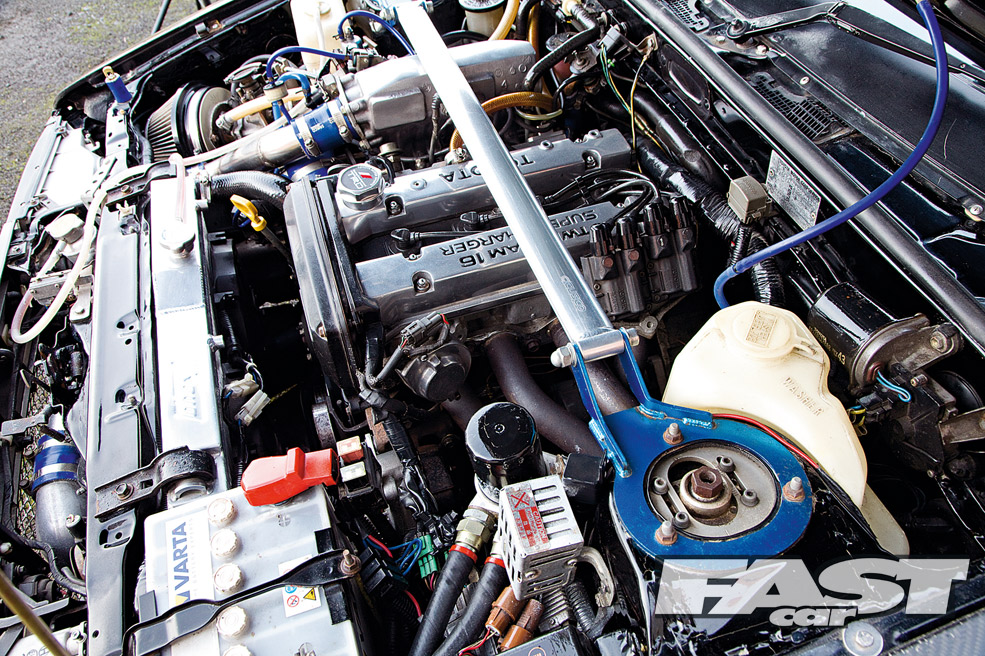
Toyota 4A-GZE Engine
Commonly found in: AE86, AE92 ands AE101 Corollas, Mk1 MR2
Spec: 1.6ltr 16V (20V in late models) straight four N/A (Supercharged in GZE models)
Standard Power: 115-170bhp
Potential Power: 500bhp+
First appearing in the early ’80s, the 4A-GE is an almost blatant copy of the Ford 1600 BDA race engine, and as such has huge potential; the Formula Atlantic race engine versions revved as high as 12,000rpm with no problems!
The common 16v N/A versions gave between 115 and 125bhp as standard, which isn’t a lot, but it’s very revvy and in a lightweight car like a Corolla it still makes for a very fun package and is very reliable too.
Common upgrades like exhaust systems, cams, and throttle body conversions make things a lot more fun, and while up to 240bhp has been achieved from this lump in N/A form, even getting a genuine 170bhp is very expensive.
For this reason it’s often more popular just to swap to the later throttle-bodied 20v version of the 4A-GE, or supercharged version found in some import Mk1 MR2s and FWD Corollas, both of which give up to 170bhp as standard.
Upwards of 200bhp, whether you have a 16 or 20v engine, tuning gets expensive in N/A and even the supercharged form, and at the risk of us sounding like a broken record, the solution for big power is turbocharging.
There are no real tricks or secrets to turbocharging this engine, and as you might expect from an engine that can do 240bhp in N/A form, it takes to it very well. With a turbo attached we’ve seen upwards of 500bhp from these engines.
As you might imagine, big power from a 1.6 means they can be laggy, but there is a solution to the lag that potentially gives the best of both worlds, and that’s twincharging.
These setups are usually = based on the 4A-GZE supercharged lump with a turbo bolted on too, and HKS even made a full twincharged kit at one point. If done right, a twincharged 4A-GZE would be a monster!
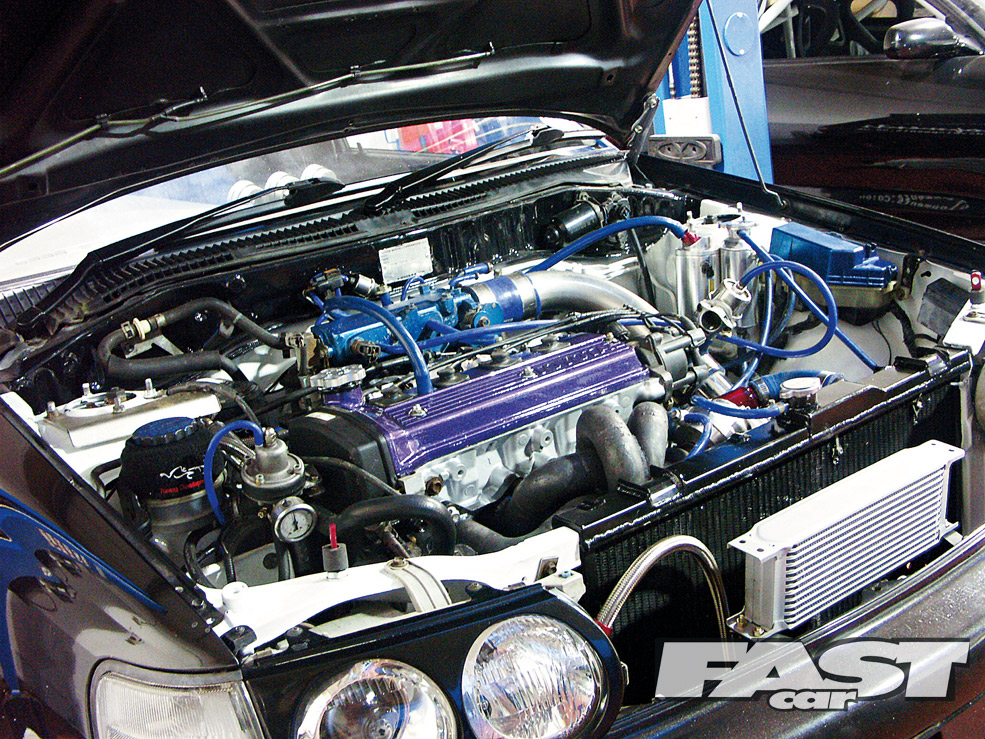
Toyota 4E-FTE Engine
Commonly found in: Starlet GT Turbo and Glanza V
Spec: 1.3ltr 16V four cylinder turbo
Standard Power: 135bhp
Potential Power: 450bhp+
The little 4E-FTE found in the turbocharged Starlet and Glanza models is one of the most impressive small capacity engines in existence. Over 200bhp is no problem on standard internals, 300bhp is considered quite straight forward, and upwards of 450bhp has been achieved from big budget setups.
With a steel crank and strong rods as standard, even the totally stock engines are safe to be revved to 8000rpm, and we’ve seen the hard tuned ones making peak power as high as 8500rpm.
With increased breathing and cooling thanks to a full exhaust, induction kit, and front mount intercooler, and then more fuel and air thanks to tweaks to the ECU and boost limit, and you have an easy 190bhp.
Beyond this you need a larger turbo, but then you’ll quickly reach the limits of the stock internals, so the choice is risk blowing the engine or go the whole hog with uprated internals.
For this reason there are often a lot of 180-190bhp versions, and a lot of 250-350bhp versions, and not many in between; the upgrades for a reliable 200bhp aren’t a million miles from one with 350bhp!
When going for big power the upgrades are typical turbo tuning components such as forged internals, longer duration cams, headwork, and the associated large turbo and fuel system, but the standard crank can stay unless you want to go for bigger capacity to help torque and turbo spool-up.
Increased capacity is a relative term, and on the whole they are taken to 1.5ltr using parts from the Toyota 5E engine, and while this is only another 166cc, it’s considered well worthwhile by many.
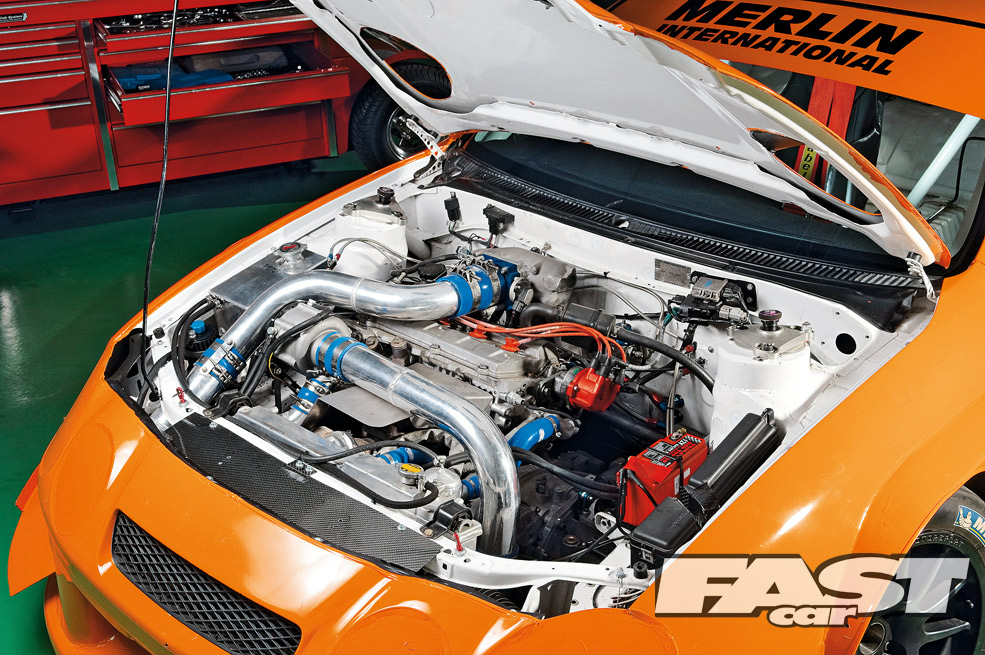
Toyota 3S-GTE Engine
Commonly found in: MR2 Turbo and Celica GT-Four
Spec: 2-litre four cylinder turbo
Standard Power: 182-256bhp
Potential Power: 800bhp+
The 3S-GTE has been around from the mid- ’80s and fitted to production cars right up to 2007. It also has countless rally wins to its name, including the 1992-1994 World Rally Championship.
The first thing worth noting is that while the 3S-GTE is known to have a relatively weak block, countless cars have run 500-600bhp for quite long periods with no issues.
If you have the money, the WRC cars ran a special, thicker version of the 3S-GTE block and head which have been proven at 850bhp.
The standard internals are, like all Toyota engines, surprisingly strong, with people getting as much as 500bhp, but for reliability we would certainly expect to have uprated internals at that level.
When it comes to a lower level of tuning, later models came with MAP sensor management, a stronger head gasket, and a few other changes too, and this makes tuning far easier, with 300bhp possible with the standard turbo and injectors.
On all 3S-GTEs the standard intercooler or chargecooler setup is far from ideal, so a big intercooler is far more efficient.

